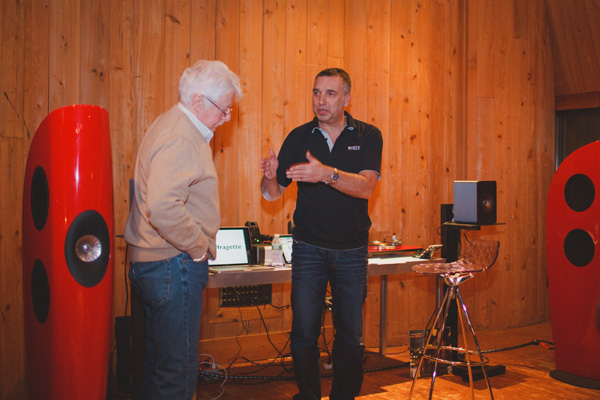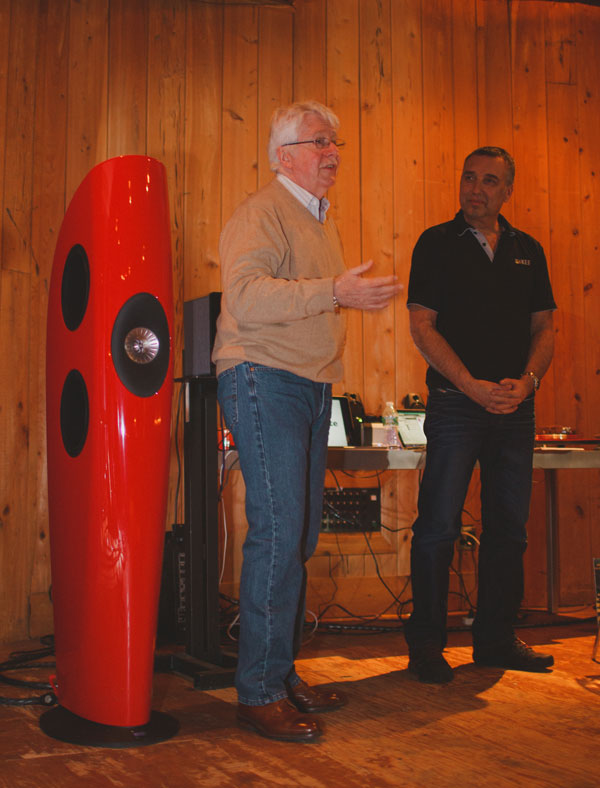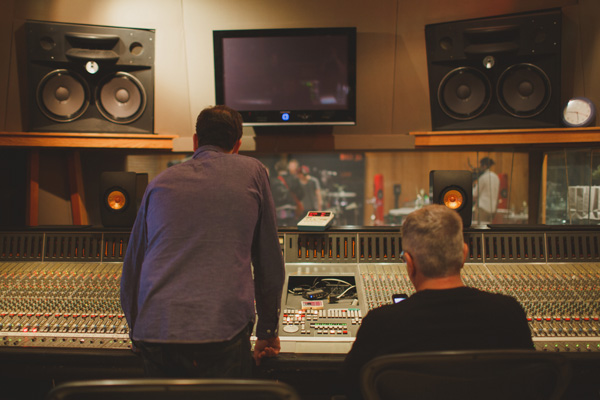Download
Popular Posts
-
Gibboni and the Gibbon: At Stereo Exchange’s annual Spring High-End Audio Show, Roger Gibboni (left) of Rogers High Fidelity debu...
-
Hey, we were in earthquake country, the land from which Carole King may have received inspiration to write, "I Feel the Earth Move...
-
A reader once noted that I tend to stick with the same reference gear longer than most reviewers. In addition to Audience's Au24e i...
-
The Enigmacoustics company from Irvine in California has become renowned for the self-energized, horn-loaded Sopranino electrostatic su...
-
Today, Sony announced an end to production on all MiniDisc players. In a few years, MiniDisc production will cease as well. I know w...
-
The name sounds perfect . It fits neatly next to those of Messrs. Leak, Sugden, Walker , Grant, Lumley, and others of Britain's...
-
Silicon Valley–based Velodyne was founded in 1983 to develop a range of subwoofers that used servo-control to reduce non-linear distorti...
-
I've heard a lot of great audio components over the years, but even in that steady stream of excellence, a few have stood out as so...
-
I've long kept an eye on Michael Creek's loudspeakers (Epos) and electronics (Creek). He's always moving forward, with eith...
-
You don't need me to tell you that listening habits are changing. Although those who predict that the end of our beloved home stere...
Market information
Blog Archive
-
▼
2014
(109)
-
▼
February
(13)
- Stirling Broadcast BBC LS3/6 loudspeaker
- Audeze LCD-X headphones
- A Unique KEF Event
- Unity Audio Signature 3
- Squeezing the Music...
- You Really Can Help Save the Stereo
- In Praise of a Classic: the BBC LS3/5A
- A Day in the Life (#gradolabs)
- Essential Audio Hosts Aurender & Bricasti Design
- Ken Shindo, 1939–2014
- 2014 Records To Die For
- Looking Forward: Carla Bozulich’s Boy
- Benchmark ADC1 USB A/D converter
-
▼
February
(13)
A Unique KEF Event

Thursday February 13 was a day most of us in New York would have preferred to stay inside. With 10” of snow falling since the night before, the Stereophile office closed, the roads in my neighborhood impassable, and public transport iffy at best, I really didn’t want to make the trek into Manhattan. But I did and was glad to have done so. English loudspeaker manufacturer KEF, represented by a team led by the brand’s international ambassador Johan Coorg (above right), were promoting a unique event for the press at MSR Studios on 48th Street featuring legendary engineer and producer Ken Scott (above left).
KEF had flown in a young band from Nashville, Staying for the Weekend, and the plan was for the band to play two songs live in the studio, with the recording produced by Ken Scott and co-produced and engineered by Derik Lee. The assembled press would hear the band live (minus the vocals, which were not amplified, but just laid down in ProTools), then crowd into the control room to hear the mix on KEF LS50s mounted on top of the console’s meter bridge. A CD would be burned for each journalist and we would all listen to it on the red KEF Blade speakers, driven by Bryston amplification, that flank Scott and Coorg in the photo.

The idea was to educate the press in how the recordings are made, how what is heard live is translated into recorded form, and how even a typical rock recording benefits from being played back on a true high-end audio system

After Johan Coorg’s opening remarks, Ken Scott took the floor. Ken dropped out of high school in the 1960s to start work at London’s famed Abbey Road Studio. Among his first sessions as a lowly assistant were the Beatles’ Magical Mystery Tour and the White album—he had us laughing at his stories of those golden days; he was asked what is was like to record Eric Clapton in George Harrison’s “While My Guitar Gently Weeps” and he had to admit that he just couldn’t remember, such was the atmosphere in the studio—but most importantly, he told us how he had learned what was important in those days of recorders with a limited number of tracks. For example, you couldn’t lay down several guitar solos and decide later which to use in the mix. You had to get it right on the fly, with perhaps only a subsequent punch-in to correct something—the opposite of these modern times, where there may be 59 different solos available to use in ProTools but no-one can decide which is the keeper.
Ken is a vocal critic of “The Loudness Wars”—see my recently posted essay on the subject—and he admitted to being known as GOM—for Grumpy Old Man—on some of the pro-audio Usenet groups. To make his point, he played us a WAV file of David Bowie’s “Suffragette City,” which he co-produced. Except that he had spliced between the original mix and a version that he had asked a colleague to mix as though it were being released today. The difference was jarring. Despite the "modern" over-compressed mix initially sounding impressive, when the original version cut in, the soundstage opened up, there was space around the instruments and Bowie’s voice sounded more natural, yet without the track losing anything. Ken played the file three times, after which there was general agreement among the mainstream press present that something had gone horribly wrong in the way recordings were made in the 40 years since Ziggy Stardust was released.

Following Ken Scott’s presentation, Staying for the Weekend took the stage and KEF’s Stephanie Scola handed out earplugs, which the oldsters in the audience, like me, found very welcome.

Listening to the mixes of the two songs on the KEF LS50s that were bring used as monitors in the control room, I was impressed by how much of the band’s live dynamics a) had been captured in the recording and b) how much of those dynamics were being reproduced by the little LS50s. We then all trooped back into the studio and listened to the evening’s work on the KEF Blades. Oh my! These no-compromise speakers allowed the great white magic of rock’n’roll to flow freely!

KEF’s own report on this very successful evening can be found here. It joins some excellent essays on both music and audio technology that I recommend highly.
Source : stereophile[dot]com

- Không có bài viết liên quan

Comments[ 0 ]
Post a Comment